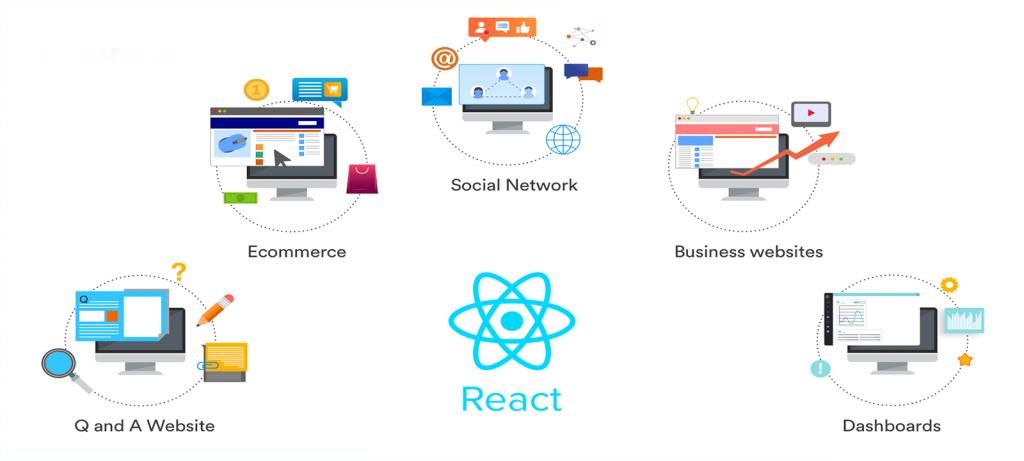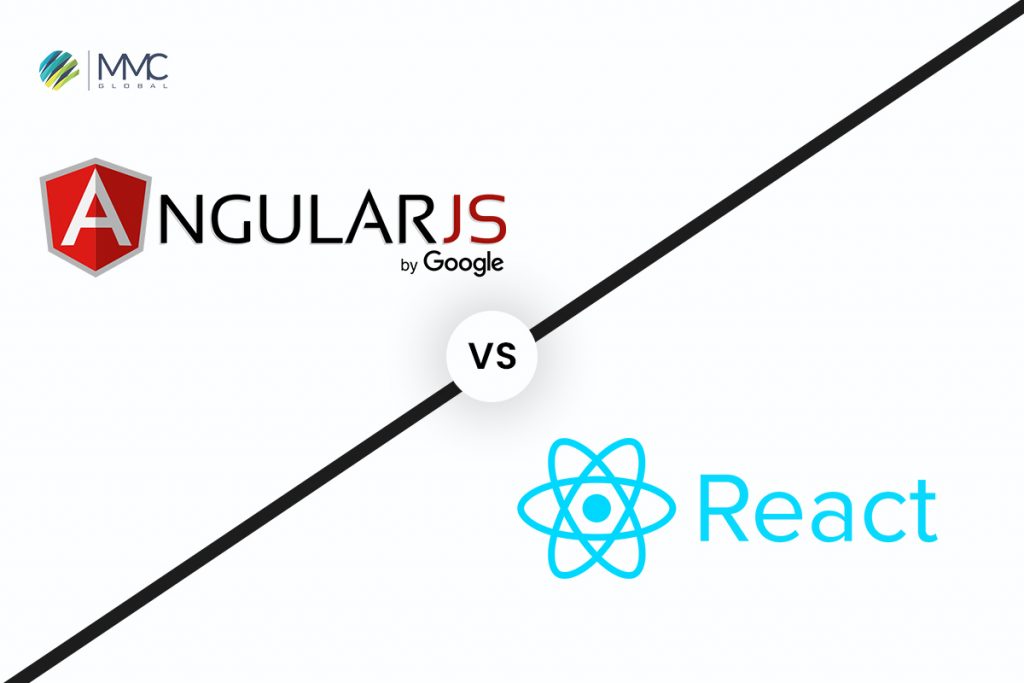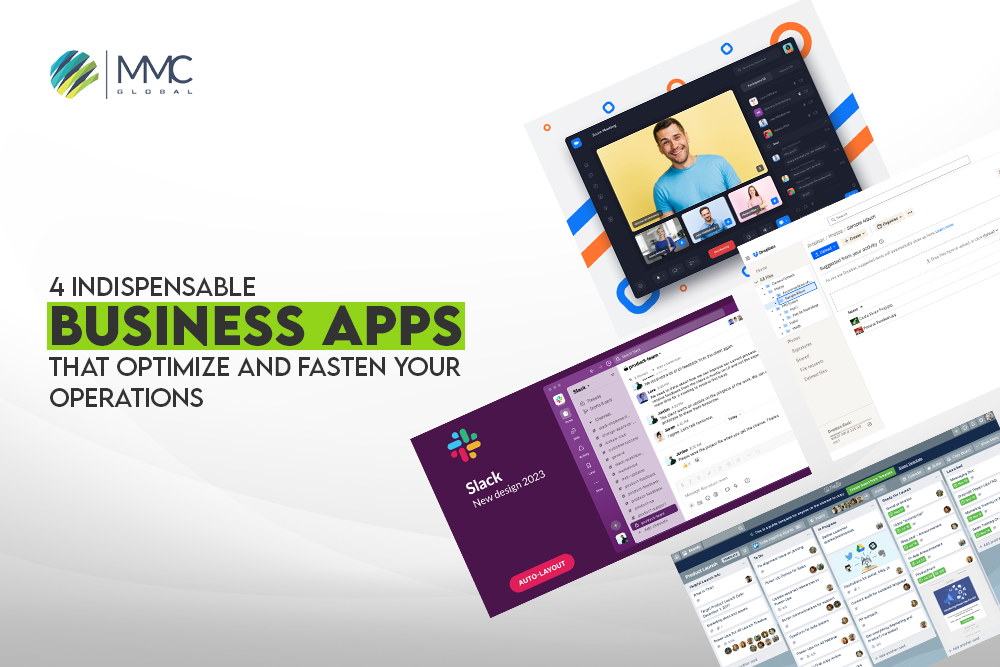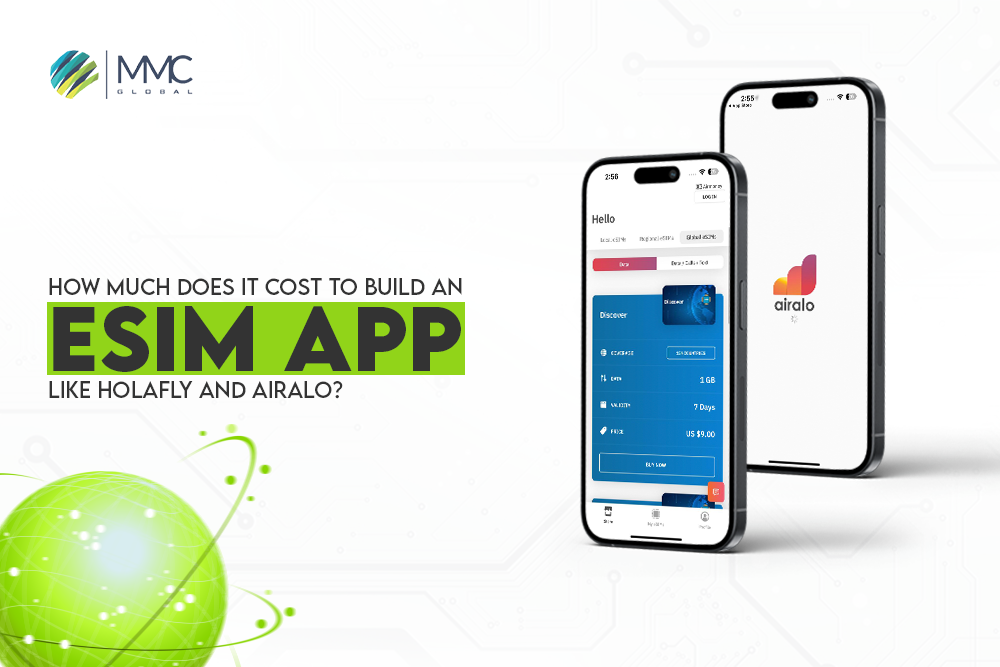App?
We’ve all heard about AngularJS and React mobile app development. Angular came into life for some time. But React mobile app development is fairly new. Google presented the Angular. On the other hand Facebook presented the easy-to-understand React language. Both of these tools offer a number of similarities. However, they also have their differences in terms of functionality and purpose. That’s the reason we have to make choice between them. Also, it creates difficulty for developers who are looking to create mobile apps with Angular, AngularJS, or React.
At MMC GBL, we have a huge team of Angular app development and React app development. However, we don’t just throw your application to develop but first, we discuss. Providing the best-suited solution is our aim. Further more, we spare time to discuss your project first.
Our professional and experienced IT experts suggest what makes your application more powerful and exciting. Are looking for a consultation? Or want to hand over your app development project, we are ready to help.
What Is Angular?
Angular is an open-source JavaScript framework. In October 2010, MIT license releases Angular for the very first time.
It follows one way data binding architecture and has a very complicated arrangement order. Furthermore, it makes it easy for developers but difficult for designers to work with its templates. Angular also comes with a dependency injection feature. It is similar to what we see in the case of AngularJS.
Angular is a very powerful framework. As it comes with many features like dependency injection. It also has better performance when it comes to building large web applications. Whereas AngularJS tends to slow down after the application reaches a certain size.
Another factor that makes Angular more preferred is the ng-Europe conference. It organize every year where core Angular contributors meet and share ideas. They discuss about how to make Angular better. In terms of features and performance
Who uses Angular 1?
Angular JS developers had introduced Angular 1 back in October 2010 at Google creating a revolution in web development. AngularJS was built to solve the challenges faced with developing single-page applications. Angular 1 uses in a number of big players including Adobe, Intel, and Wix.com.
In September 2016 Angular 4 was released as Angular 2 but the Angular team developer community quickly realized that the numbers created confusion, renaming it to Angular 5 before releasing Angular 4 to resolve bugs and then finally renaming it back to Angular 2.
In the 2017 Feb release of Angular 4, its name changed again into Angular 5 for unknown reasons, now in the 2018 April release, they have returned to Angular 2 again! As you can see there’s no consistency with version names Angular uses, Angular team doesn’t like number versioning at all.
The Angular release history has shown that Angular 2 was built to solve the problems AngularJS 1 couldn’t handle; hence it was developed as a complete rewrite of AngularJS 1 . This shows Angular is constantly evolving through Angular development community feedback and Google prioritizing its demands for new features. Angular currently powers programs including Pinterest, Netflix, Freelancer.com, and many other successful companies around the world.
What Is AngularJs?
AngularJS is the first version of the Angular framework. It has written in JavaScript and on the basis of MVW (Model View Whatever). AngularJS was first released as a beta in October 2010 by Google under Apache License 2.0.
It’s basically for building large web applications using HTML as a template language. The code written in Angular is quite verbose since it uses plain JavaScript along with some extra features which are not available out of the box in JavaScript itself. This makes Angular very useful when building complex applications. AngularJS is built on top of Angular and Angular is the successor to AngularJS.
What Is React Mobile App Development?
Facebook has released React back in 2013 as an open-source framework. It power up the user interface (UI) for Facebook users where it is used internally. It became so popular that Facebook’s engineers had to force to create an entirely new library called React. As it turned out, the library was very useful outside of Facebook as well, which led to the independent development of Angular 2+.

When using Angular, you are responsible for creating dependencies manually in your code or using Angular-specific tools like Angular Material UI, Angular CLI, or Angular Dependency Injection. Although this happens transparently in React mobile app development utilizing a specific set of tools provided by its creators called ‘Create React App’.
React mobile app development comes with most features built-in. It is offering developers more flexibility when building apps through the many components available providing core functionality for most web applications.
When choosing between Angular and React mobile app development, it’s important to understand that these are very different frameworks with unique benefits offered. The list below highlights Angular vs React differences that will help you narrow down which one is right for your project.
Read More: 7 Kickass Reasons for Building a Mobile App with React Native App Development
Factors To Consider In Choosing Between Angular vs React Mobile App Development

1) Popularity
Angular is popular amongst programmers who want to start mobile app development. React, on the other hand, has garnered immense popularity over Angular in 2021. Angular 1 has around 65k stars on Github compared to React’s 85k stars (as of June 2015).
The Angular team has recently announced Angular 2, which will contain support for Angular 1 apps and Angular 1.5 can be used side-by-side with Angular 2. React is a popular and successful framework that has been gaining momentum over time. It topped many recent surveys, including the Stack Overflow developer survey as well as the state of JS poll to name just two!
2) Architecture
When it comes to architecture, both Angular and React have a component-based design. However, their modular components are similarly reusable which makes them robust enough for most apps without much issue. However, there’s one major difference between these two technologies: JavaScript vs Typescript.
While JS was more error-prone according to Stackoverflow’s survey (which may explain why so many app development companies use this language). TypeScript offers greater typing safety when coding applications in comparison with usual HTML/CSS.
3) Learning Curve
Angular requires developers to learn TypeScript along with Angular concepts such as Angular directives, Angular modules, Angular 2-way binding, and Angular dependency injection.
React mobile app development makes use of JSX language instead of HTML to write code which can be difficult for developers to understand initially. Angular is quickly picking up speed with Google’s support while React takes its own sweet time catching on due to lack of corporate endorsement or external infrastructure that supports it (like Angular).
In our opinion, React is easier to learn than Angular. If you’re someone who has experience with JavaScript and wants an app without all the hassle of building it yourself from scratch then we recommend checking out this framework! One great thing about using react? There are plenty of resources available online. Those can help get your projects done quickly. No matter what kind they might be (even if there’s not exactly a tutorial matching yours).
4) Development Speed And Productivity
Angular 1 applications provide higher TPS (transactions per second) compared to Angular 2 apps (which are still in the alpha phase). At the same time, one cannot dismiss advantage of React over Angular due to its component-driven design. Components help keep developers focused on one thing at a time by breaking down single-page applications into multiple parts.
Angular makes use of directives whereas React mobile app development has components. It has two-way data binding whereas Angular 2 only has one-way data flow. Angular 1 controllers are tightly coupled with DOM while Angular 2 uses services that can be injected into HTML templates. Angular is more flexible than React, but it reduces the speed of development.
5) Flexibility And Freedom
Angular is a full-fledged framework provides high flexibility. But this comes at the cost of slower development due to its complex structure requiring the implementation of different pieces of technologies.
Such as TypeScript for building applications written in JavaScript. Though the result is worth it due to Angular third-party plugins and community support.
Angular allows Angular modules to be created; Angular 2 goes a step further and allows Angular 1 and Angular 2 components/directives to co-exist in the same HTML template.
React mobile app development offers freedom of implementation like Angular, but due to the lack of any official support, it is not widely accepted. Angular developers tend to find work faster than React developers because it has been around for longer and the majority of big companies prefer Angular over other frameworks.
For developers who enjoy freedom and customization, the React framework offers a great choice. It makes customized according to your needs. With more flexibility comes a higher possibility for error as well so make sure you consider all possibilities before launching into anything!
6) Document Object Model (DOM)
The Document Object Model (DOM) is a cross-platform convention for representing and interacting with objects in HTML, XHTML, and XML documents.
Angular makes use of directives at the root level or on an element so that it can act as a marker for Angular change detection. It uses two-way data binding to update the DOM with Angular.
It means that Angular will check if there is a change in the Model and then corresponding changes are reflected in the View (DOM).
Angular 2 has a one-way data flow; only changes from controller/service to model can be made. It ensures that the view renders properly without making any unnecessary updates on page reloads.
React uses Virtual DOM which is a much faster and more efficient way of tracking changes in the VDOM. In addition, it also makes app development easier because they don’t have to worry about any other section being affected by what you’re doing on one screen or another
For example: when someone clicks an input button with their mouse – that action could be recorded somewhere within your site’s code. It will then cause all sorts of things (like showing previews) related to happen immediately without waiting until after loading the whole page first!
7) Data Binding
Angular’s two-way binding helps developers write less code, but it is slower as compare to React Native due to its own implementation of Virtual DOM. Developers have reported some performance issues with 1 because of its dirty checking mechanism where Angular checks for changes in the data model.
Angular 2 comes with improved change detection compared to Angular 1 which does dirty checking. It uses the concept of Zone.js to provide support for asynchronous operations, event loop, and process.nextTick. It provides the next JavaScript frame to execute before Angular updates DOM.
Angular does not have official support for Ionic/Cordova-based mobile applications while React Native is directly supported by Facebook itself.
8) Mobile Solutions
Angular’s first version was meant only for web development. But it has come a long way by providing native mobile application development through awesome features like Angular Universal, Angular CLI, Angular Material, etc.
With the help of these tools, developers are able to create awesome apps for both the web and mobile. It has a dedicated team working on Angular Universal. It helps in rendering Angular applications on the server-side before sending a response to the Angular client.
Angular CLI is a command-line interface tool that provides features like scaffolding, serving e2e tests, etc. Angular Material – Angular’s official UI components incorporate the design spec of Google Material Design to bring user interfaces to life with animation and rich interactions.
React Native app development allows developers to use JavaScript along with ReactJS to build native applications for multiple platforms (Android, iOS). You can use a single code base without compromising on performance or speed.
9) Testing
Angular follows TDD (test-driven development). It has vice versa as a test runner. It uses the jasmine framework by default but can be extended to any framework.
The Angular team has developed Angular-CLI (Command Line Interface). It makes Angular testing easy by creating separate unit test files with Angular decorators for each class in the application. Angular 2 uses the Jasmine framework by default but can be extended to any other framework like Mocha, QUnit, etc.
Angular comes with Angular-CLI (Command Line Interface) that provides features like scaffolding, serving e2e tests, etc. React Native has no official support for automated testing; although there are few third-party tools available that could require extra investment on your end.
10) Community Support
Google supports Angular which contributes towards its betterment and evolution. They have their own forums where developers can ask questions directly related to Angular.
The angular team also conducts Angular conferences and meetups around the world to spread their knowledge and love for Angular. Angular foundation supports Angular 2, which means Angular CLI, Angular Material, etc. are governed by Angular Foundation.
React has large community support because it’s open-source and used in production apps by Facebook. There are lots of discussions and help groups via different mediums like social media platforms, Google+ communities, etc.
When To Choose Angular Mobile App Development?
Angular is a very powerful framework as it comes with many features like dependency injection. It also has better performance when it comes to building large web applications. Whereas AngularJS tends to slow down after the application reaches a certain size.
Another factor that makes Angular more preferred is the ng-Europe conference. It holds every year where core Angular contributors meet and share ideas on how to make Angular better in terms of features and performance.
When To Choose React Mobile App Development?
Developers love using React due to its simplicity and ease of use for smaller projects compared to Angular. It takes less time to develop apps using React compared to Angular. Since there is no need for writing verbose code in JSX or TypeScript. So if you are looking for an option that doesn’t involve a steep learning curve and requires less time then React JS is the right choice.
Angular 2+ versions are tough to learn for developers or designers who are not familiar with TypeScript or ES2015 JavaScript features. Also Angular is quite opinionated. It has only one way of doing things which makes it difficult to use Angular. If you have multiple requirements that don’t fit in Angular way of doing things.
Wrapping Up
Angular and React both are great frameworks but they may not be suitable for all types of web or mobile applications. If your project is small with limited functionality then ReactJS is the best option available.
Whereas Angular is better suited for large-scale projects where performance and scalability matter most along with ease of development. Angular also offers some unique solutions to AngularJS problems like Angular CLI, Angular Material Design, etc. It is providing Angular with some distinct advantages.
So the decision will depend on your project requirements along with the complexity of your web or mobile app. If you are looking to hire Angular developers or React developers then it’s better to outsource for faster results. At MMC, we provide a consultation before starting your project. We discuss all the pain points and suggest to you what’s better for your next project. So let’s start!



